#late triassic period
Explore tagged Tumblr posts
Text
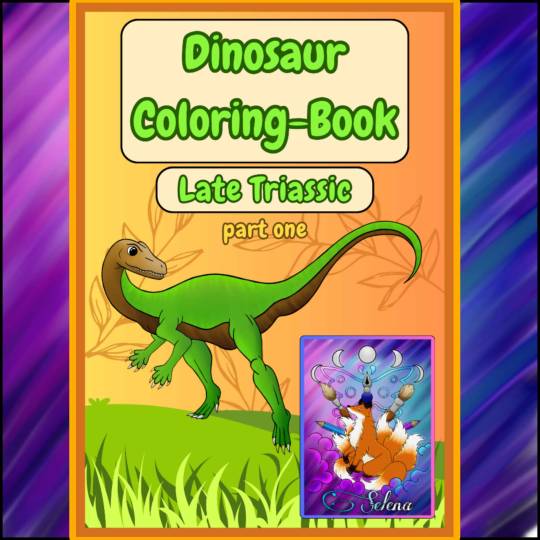

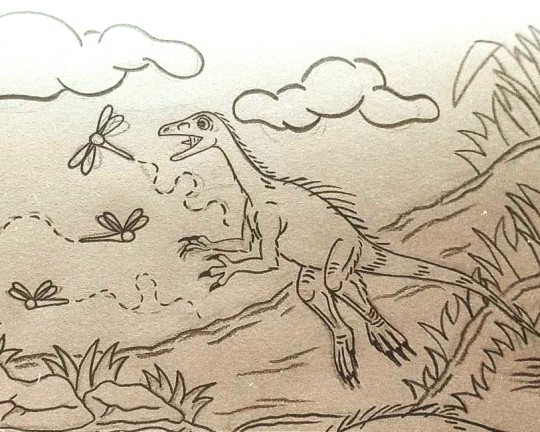
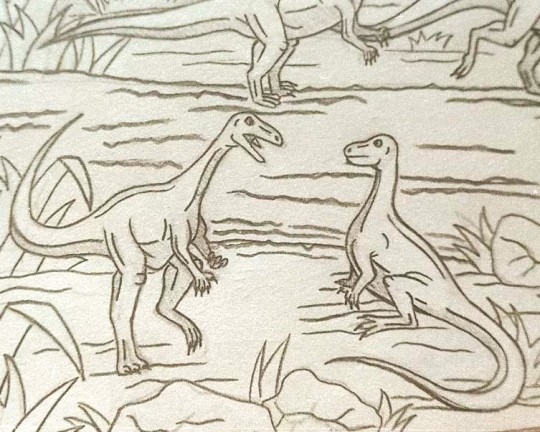


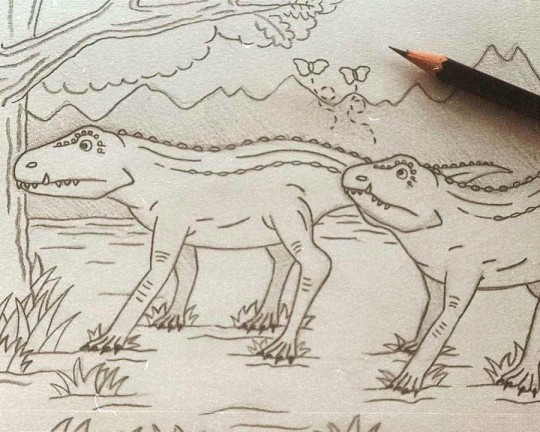
The first part of my dinosaur coloring-book series is finally out on Amazon! I would really appreciate, if you, lovely people, would go and check it out 💜
#art#artists on tumblr#my art#original art#illustration#dinosaur#late triassic#late triassic period#coloring#coloring book#dino#dinosaurs#jurrassicpark#jurassic world
0 notes
Text





















collection of all the prehistoric ocean period sets
#illustration#digital art#art#aesthetic#illustrators on tumblr#animals#character design#dinosaur#paleoart#paleontology#paleoblr#paleomedia#artists on tumblr#dinosaurs#paleoposting#paleo tag#paleobiology#mosasaur#plesiosaur#megalodon#dunkleosteus#basilosaurus#late cretaceous#jurassic period#triassic
416 notes
·
View notes
Text

Hollow Forms under the Full Moon - A male Coelophysis bauri chases a female Coelophysis running across across a fallen log with a half-digested Hesperosuchus in its jaws, 212 million years ago in what is now the Chinle Formation of the American Southwest.
#coelophysis#late triassic#triassic period#triassic#paleoart#dinosaur#dinosaurs#paleontology#paleobiology#paleoblr#palaeoblr#palaeoart#dinosaur artwork#dinosaur art#mesozoic#digital#digial art#theropods#theropoda#theropod
101 notes
·
View notes
Text

Gorgosaurus! Inspired by the gorgosaurus from walking with dinosaurs.
Not one of my favourite pieces.
#paleoart#jurassic world#oc art#oc artwork#artwork#digital art#dinosaurs#paleontology#walking with dinosaurs#walking with beasts#gorgosaurus#carnivore#theropod#dinosaur#paleoanthropology#paleomedia#paleoblr#paleoillustration#paleolithic#jurassic park#jurassic dinosaurs#triassic#camp cretaceous#late cretaceous#cretaceous period#early cretaceous#original art#my art#art#artists on tumblr
13 notes
·
View notes
Text
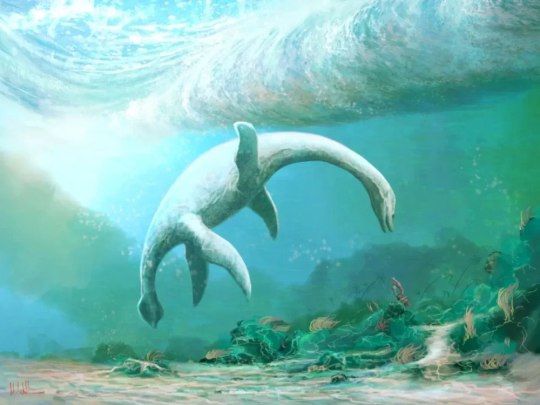
Thalassiodracon
Thalassiodracon — вимерлий рід плезіозаврів з родини Pliosauridae, що існував у пізньому тріасі – ранній юрі і відомий виключно з Нижнього Ліасу Англії. Типовий і єдиний вид — Thalassiodracon (Plesiosaurus) hawkinsi (Owen, 1838).
Повний текст на сайті "Вимерлий світ":
https://extinctworld.in.ua/thalassiodracon/
#thalassiodracon#england#great britain#late triassic#triassic#triassic period#plesiosaurus#jurassic#pliosauridae#plesiosaur#paleontology#paleoart#prehistoric#animals#extinct#fossils#ua#illustration#sciart#article#palaeoblr#палеоарт#палеонтологія#ukraine#ukrainian#digital art#daily art#україна#мова#арт
73 notes
·
View notes
Text

No, no, this isn't an AI-generated image! It's a 220 million-year-old petrified log located in Petrified Forest National Park, Arizona, USA. This park is famous for its vast petrified wood deposits. Petrified wood forms when minerals replace the wood fibers over millions of years, resulting in fossilized wood that can be as hard and colorful as gemstones. The log in the picture is entirely replaced by quartz crystals, making it sparkle in the close-up view. This log, dating back to the Late Triassic Period, about 225 to 207 million years ago, serves as a fascinating reminder of the ancient forests that once covered this area.
18K notes
·
View notes
Text

"The Entity" is the first and most powerful organism in our planet's history. It has witnessed and regulated every era of life on this planet. When the earth population becomes rather unruly, it intervenes; breaking out of its usual dormant state to initiate a rather brutal regulation process. The Entity transfers all of its energy into a small embryotic form, lying in wait for an unsuspecting creature to devour it.

Upon being consumed, the assimilation process begins and the entity mutates its host into a giant titanic organism; "Gojira" as it has been referred to in modern times. Throughout earth's lifespan, The Gojiras have been responsible for most of earth's extinction events, the greatest of which was caused by one known as "Primordius" from the Permian/Triassic era. The monsters pollute the atmosphere sending down toxic rain and fog that poison at most 90% of life.

The one known failed instance of a Gojira Level Event was set during the late cretaceous period when the subject known as "Penultimus" was struck by an asteroid before it could fully initiate the extinction process

While the process of mutation takes roughly a few centuries to complete, due to scientific medaling, subject "Proximus" underwent scientific experimentation. The result of which caused the animal to mutate into a Gojira within a week while also creating a rather...unorthodox extinction event.

574 notes
·
View notes
Text
The finished fossil timescale vase! Seven periods represented by seven fossils in the seven colors of the rainbow. Closeups and fossil names below
Red: Trilobites, ammonites, and pikaia among other things for the Cambrian. Orange: Tiktaalik filling in as the Devonian representative, had to include the iconic transition fossil :] Yellow: Thrinaxodon and Broomistega in the Triassic cuddle. Green: my favorite pterosaur, Ramphorynchus, representing the Jurassic. Blue: my first favorite dinosaur, Spinosaurus, for the Cretaceous. Indigo: my favorite animal, a coelacanth, sort of wedged in for the Late Cretaceous since I couldn't come up with a better Cenozoic fossil in time. Violet: Sahelanthropus Tchadensis, an early hominid (I'm not 100% on if it's still regarded as our earliest known ancestor, cool regardless!!)
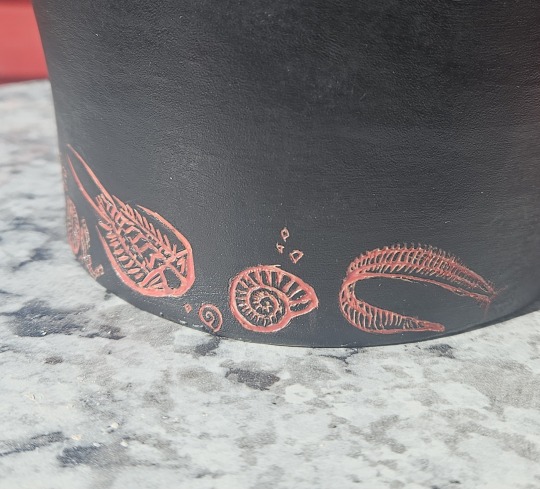
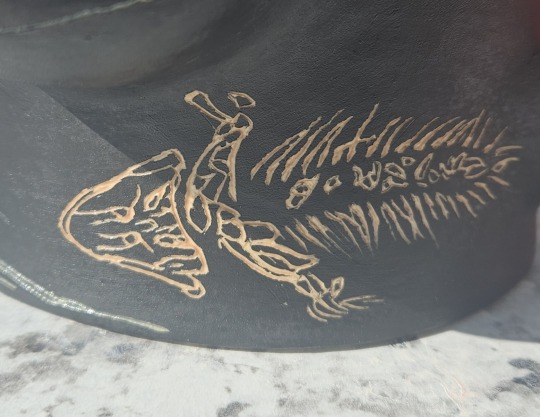
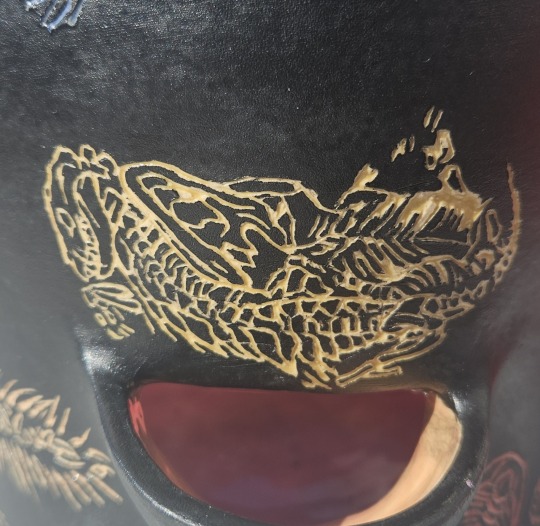
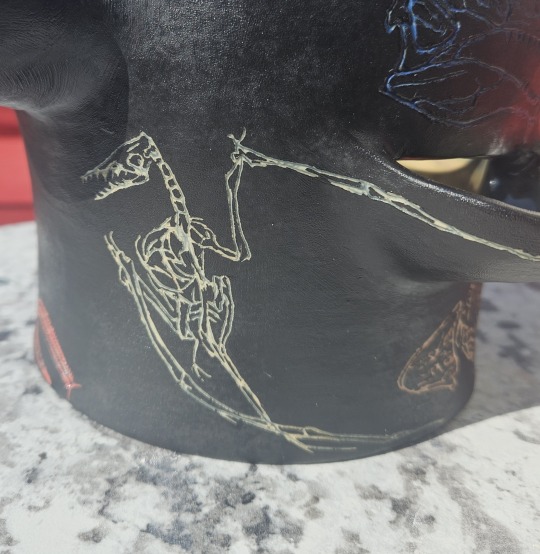
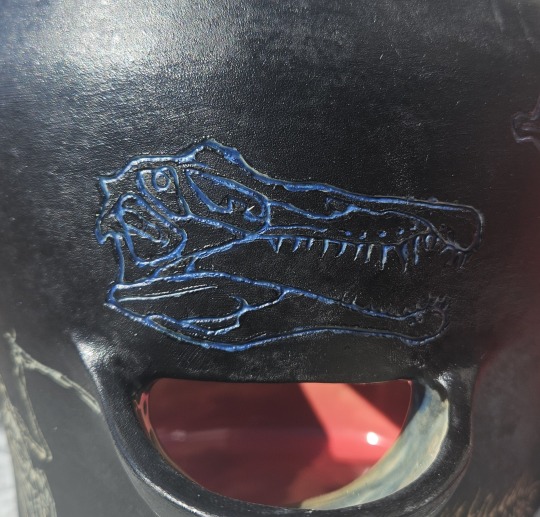


#i dunno how to fix the video getting so microwaved so uh. sorry it looks like that#i was so disgusted with this thing when i first got it back from the kiln it was baaad#cause the glazes decided to humble me for some godfosaken reason and didnt fill in half of the engravings#went and did some color matching magic with acrylics and whabam! pretty proud of it#i want to put plants in it so badly but knew i HAD to do at least one photoshoot with it nice and pristine#paleo art#paleontology#paleoblr#dinosaur#dinosaur art#trilobite#tiktaalik#thrinaxodon#broomistega#ramphorynchus#spinosaurus#coelacanth#sahelanthropus tchadensis#hominid#ceramics#pottery#carving#wasps-pots#waspsart
200 notes
·
View notes
Text

Species of Ichthyosaur Is Largest Known Marine Reptile at 80 Feet Long
A father and daughter duo found the jawbone of the species and the research team named the new marine reptile species Latin for 'giant fish lizard of the Severn.'
A father and daughter, searching for fossils on an English beach, found more than they expected: the jawbone of what may be the largest known marine reptile. Scientists estimate that the giant ichthyosaur, from which the jawbone came, measured 80 feet long and lived during the late Triassic period. A report in the journal PLOS details the find. When Justin Reynolds and Ruby Reynolds (then 11) were combing the beach at Somerset in 2020 and came upon a giant bone chunk, they knew they were on to something. “When Ruby and I found the first two pieces we were very excited as we realized that this was something important and unusual,” said Reynolds in a release. So they contacted Dean Lomax, a University of Manchester paleontologist...
Read more: https://www.discovermagazine.com/the-sciences/species-of-ichthyosaur-is-largest-known-marine-reptile-at-80-feet-long
201 notes
·
View notes
Text

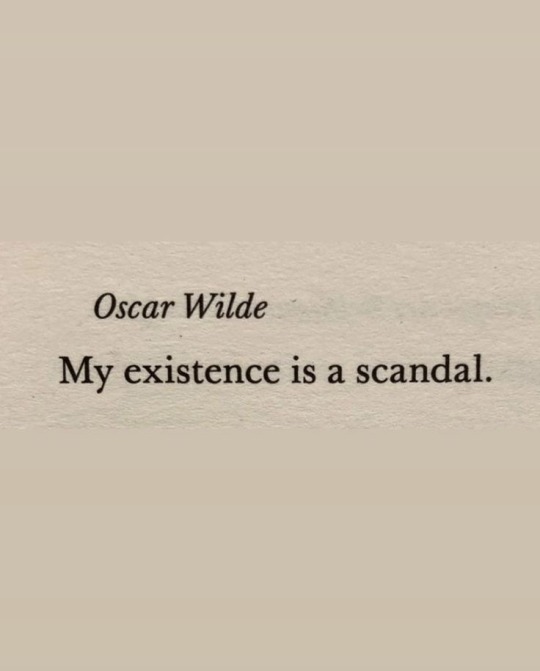
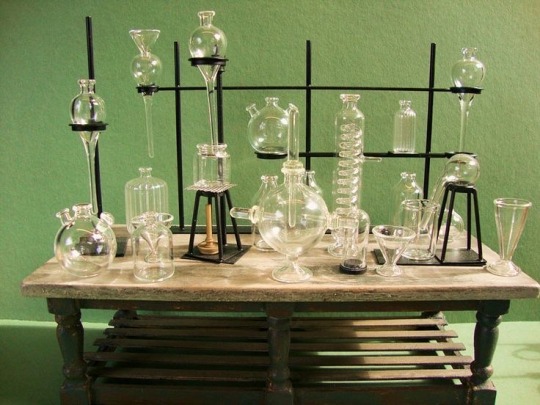

Slide 4: "Araucarioxylon" exhibit from the late triassic period in the Houston Museum of Natural Science
#poc dark academia#dark academia#black academia#stem academia#dark acadamia aesthetic#dark academia moodboard#chaotic academia#stem#stem student#stem aesthetic#chaotic academic aesthetic#dark academia quotes#literature quotes#book quotes#quotes#light academia moodboard#light academia#light acadamia aesthetic#angio moodboards
536 notes
·
View notes
Text
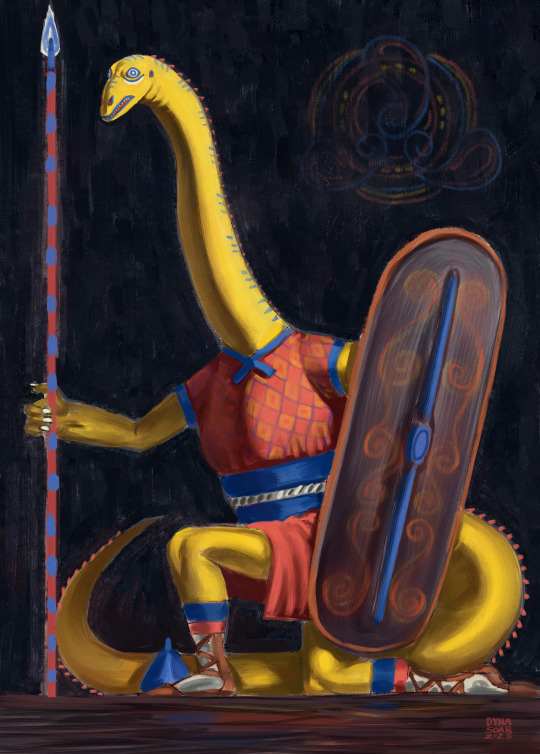
opposite to conventional representation, massopoda sculpture of the late Triassic period was often brightly painted. Imagine the ancient city roads flanked with kneeling Kholumolumo Ellenbergerorum warriors such as this one
#art#painting#digital art#digital painting#anthro#furry#sculpture#massopoda#kholumolumo ellenbergerorum#dinosaur#saurian#sauropod#scalie#anthro art#furry art#fantasy#statue#warrior#dynasoar5#ssohardd
1K notes
·
View notes
Text
Round 2 - Chordata - Actinistia


(Sources - 1, 2)
The Sarcopterygians (“Lobe-finned Fishes”), are the last of the three groups of “fish”, and are so named for the prominent muscular limb buds (lobes) within their fins. Of the Sarcopterygians living today, they are represented by the coelacanths, lungfish, and tetrapods (including humans), who all diverged in the Silurian. These next fish are closer related to us than they are to Actinopterygiians.
The class Actinistia, the “Coelacanths”, are an ancient group of fish that have been around since the Devonian but today are only represented by two remaining species: The West Indian Ocean Coelacanth (Latimeria chalumnae) and the Indonesian Coelacanth (Latimeria menadoensis).
Coelacanths can live as deep as 700 m (2,300 ft) below the sea, but are more commonly found at depths of 90 to 200 m (300 to 660 ft). They have sensitive eyes which include a tapetum lucidum and many rods which help them see better in dark water, as they are most active at night. They are opportunistic hunters, feeding on cuttlefish, squid, snipe eels, small sharks, and other fish found around their deep reef and volcanic slope habitats. Their abundance of fins allow for high maneuverability, and coelacanths can orient their body in almost any direction in the water. They have been seen doing headstands as well as swimming belly up. They are able to slow their metabolisms at will, sinking into less-inhabited depths and going into a hibernation mode to conserve energy.
Coelacanths are ovoviviparous, with the female retaining the fertilized eggs within her body while the embryos develop over a gestation period of five years. The female will give live birth to around 5-26 young. Young coelacanths resemble the adult, but carry an external yolk sac below their pelvic fins, and have larger eyes relative to body size. Individual coelacanths may live as long as 80 to 100 years.
Coelacanths get their name from Coelacanthus, a genus of Permian coelacanths and the first coelacanths to be described. Over 100 fossil species are known, and all of them were believed to have gone extinct in the Cretaceous. On December 23, 1938, the first Latimeria specimen was discovered among the catch of a South African fisherman, making coelacanths a “lazarus taxon.” While previously considered a “living fossil”, coelacanth body shapes were much more diverse in the Early Triassic, and Latimeria is not known from fossils, showing that it had to have gone through some changes to adapt to the modern day.

Propaganda under the cut:
Since there are only two living species in this class and both are threatened, this is the most endangered class of animals in the world.
Coelacanths get along with other coelacanths, though they recoil from physical touch. Scientists think that they recognize each other via electric communication.
Mawsonia was one of the largest known coelacanths, with one specimen estimated at over 5 m (16 ft) long. It lived from the Late Jurassic to Mid-Cretaceous.

(source)
90 notes
·
View notes
Text
Petrified Opal Tree Trunk Located in Arizona. Petrified wood forms through permineralization, a process where wood is buried in water-saturated sediments rich in dissolved minerals.
#minerals#crystals#gems#gemstones#opal#agate#petrified wood#triassic#arizona#petrified forest national park
55 notes
·
View notes
Text

Dinovember 2024 Day 28: Santa Maria - The New Dawn
Ecology from Brazil’s Santa Maria Formation, showing from left to right: Saturnalia, Dinodontosaurus, Staurikosaurus, Gnathovorax, two Buriolestes, and the Lagerpetid Ixalerpeton
#paleoart#dinosaur#dinosaurs#paleontology#dinovember#dinovember 2024#staurikosaurus#late triassic#triassic period#triassic
22 notes
·
View notes
Text
Fish of the Day
Today's fish of the day is the spotted gar!

The spotted gar, known by scientific name Lepisosteus oculatus, is a common North American freshwater fish. Found across the South and Midwestern sections of the country, the spotted gar has a range stretching from South of Ontario Canada, to the Northern Gulf of Mexico. In Longitude their range is from Devils river in Western Texas to Florida, with particularly notable populations in the great lakes and Florida rivers. Within this range they can be found around clear and slow moving rivers and lakes, although they will put up with saltier brackish water, and areas with low dissolved oxygen. Spotted gars in particular are known for hiding along the shoreline, where they use vegetation as a cover from larger predators. However despite their large range, their numbers have been dwindling. Previously large populations of spotted gars, once found in Illinois their numbers have dwindled due to increasing lack of clear waters and habitat destruction by humans.

Gars themselves are an incredibly old living fossil animal, having evolved into existence 240 million years ago, in the middle Triassic period, they can still be found almost exactly the same as they were back then. There are only 7 extant species nowadays, spread almost equally across two families. The spotted gar in particular belongs to the Lepisosteus genus in particular, which it shares with the Florida gar, longnose gar, and shortnose gar. It can be visually distinct from these family members by the spotting patterns along the mature gars dorsal side. Other than the Lepisoteus genus, there is the Atractosteus genus, which is known for their ability to better withstand marine conditions, being made up of the alligator gar, tropical gar, and Cuban gar. Gars can be identified by the armored scales around their body and thin knife-like mouth. All gar contain a swim bladder that can be repurposed as a lung temporarily when not in oxygenated water, similar to many other living fossil fish from around this same time period.

Focusing once more on just spotted gar, their diet consists of fast moving prey. Primarily minnows, bluegills, sunfish, and other small fish in their shared environments.Other than fish, the gars diet is made up of freshwater shrimp, learvae, and other crustacean invertebrates. This diet supports them getting to a length of 2-3 feet, relatively small compared to other gar. Other than acting as a predator though, the spotted gar is predated on by larger fish, alligator, and heron. The life cycle of the spotted gar is like that of all other gar. Spawning occurs in the months of late spring to early summer from April-June, depending on sufficient water temperatures (70 degrees or higher) and amount of vegetation. Females can lay up to 20,000 eggs in a single breeding season but on average lay only 13,000. Like many gar eggs, these are adhesive and toxic to predators, taking only 10-14 days before hatching. over 80% of all fry hatched will die in this stage. But, of those who survive, they will sexually mature at an age of 2-4 years old, with most only living to the ripe age of 8-10. Although, in captivity some spotted gar have lived as long as 18 years before meeting their end.

That's the spotted gar, everybody! Have a wonderful day!
#gar#sptted gar#spotted gar#Lepisosteus oculatus#fish#fish of the day#fishblr#fishposting#aquatic biology#marine biology#freshwater#freshwater fish#animal facts#animal#animals#fishes#informative#education#aquatic#aquatic life#nature#river#ocean
103 notes
·
View notes
Text

Amanasaurus
Amanasaurus — рід силезаврових динозаврів з пізнього тріасу Бразилії, формація Санта-Марія у Ріу-Гранді-ду-Сул. Рід містить один вид, A. nesbitti, відомий за двома неповними стегновими кістками.
Повний текст на сайті "Вимерлий світ":
https://extinctworld.in.ua/amanasaurus/
#amanasaurus#dinosaur#santa maria#late triassic#triassic#triassic period#brazil#south america#dinosaurs#ornithischia#paleontology#paleoart#prehistoric#animals#animal art#sciart#extinct#digital art#палеоарт#палеонтологія#динозавр#тварини#україна#мова#українська мова#ua#ukraine#ukrainian#article#art
16 notes
·
View notes